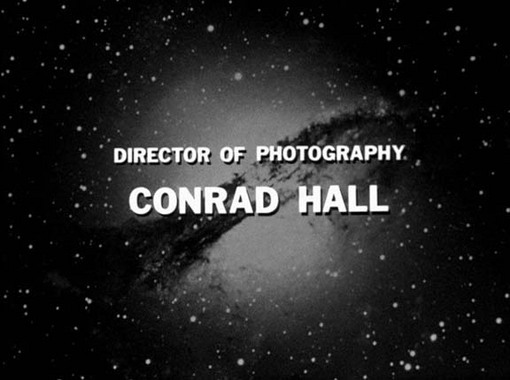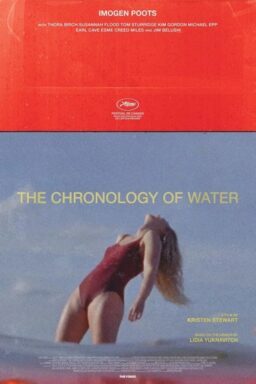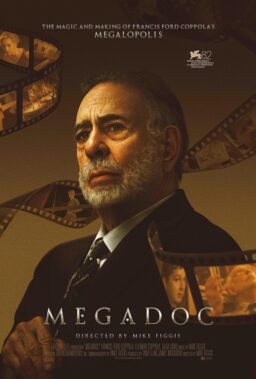“The Outer Limits” (original series) is available on Netflix (DVD), Hulu Plus and Amazon Instant Video. “In Cold Blood” is available on Netflix (DVD and Blu-ray) and Amazon Instant Video. “Cool Hand Luke” is available on Netflix (DVD and Blu-ray) and Amazon Instant Video. “American Beauty” is available on Netflix (DVD and Blu-ray) and Amazon Instant Video.“Road To Perdition” is available on Netflix (DVD and Blu-ray).
Eyes Wide Open: A Single Artist’s Vision
Ask anyone who’s devoted their life to the study and appreciation of movies and they can probably tell you exactly when they were “bitten by the movie bug,” that moment of personal epiphany that sparked an all-consuming passion for what is arguably the greatest, most powerful medium of artistic expression.
In my case, it was Stanley Kubrick‘s “2001: A Space Odyssey” that literally changed my life. That’s an influential milestone I share with many cinephiles who came of age in the 1950s and ’60s, especially those “movie brats” (among them James Cameron, George Lucas and Steven Spielberg) who were drawn to imaginative visions of the future. Because I’d spent most of my childhood outdoors or casually enjoying Disney films and other kid-friendly fare, I didn’t see Kubrick’s visionary masterpiece until it played a return engagement at Seattle’s glorious Cinerama Theater, in 1971, when I was nine years old.

(With its huge, curved Cinerama screen, the Cinerama is still the only theater in Seattle capable of showing “2001” as Kubrick intended. It exclusively hosted the film’s original 77-week Seattle run beginning in April 1968, and the fully restored 70-millimeter print of “2001” had its world premiere there, appropriately enough, in 2001, two years after the aging cinema was purchased and beautifully renovated by Microsoft co-founder Paul Allen. It’s now one of only three theaters in the world — along with the Cinerama Dome in Los Angeles and the Pictureville Cinema in Bradford England — equipped to exhibit three-panel Cinerama, requiring three synchronized projectors for the only seven films created in the three-strip Cinerama process, including 1956’s “This Is Cinerama” and 1962’s “How the West Was Won.” Starting this week [Sept. 30th] and running through mid-October, Seattle’s Cinerama is hosting a “70mm Festival” of 15 films, including “2001,” that originally premiered there.)

Like no other film before it, “2001” opened my eyes to the power of a single artist’s vision and led me to understand the supremacy of a great director. I didn’t know it then, but I’d discovered the basis of auteur theory, and while it would be foolish to deny that film is (to echo that award-acceptance cliché) the most collaborative of all art forms, it’s no contradiction to embrace the Kubrick quote that greets all visitors to kubrickfilms.com, Warner Bros.’ authorized Kubrick website: “One man writes a novel. One man writes a symphony. It is essential for one man to make a film.” (Disregard “man”; Kubrick would’ve been the first to include female filmmakers in his statement.)
“2001” ignited my fascination with every aspect of film and filmmaking. I had ignored most screen credits during my childhood; now they were the best way (along with pre-Internet reference guides) to identify and appreciate the directors, actors, editors, cinematographers, composers, production designers, costume designers, sound designers, visual and mechanical effects wizards, makeup artists (and yes, even a few tasteful and daring producers) whose collective talents had seduced me into a lifelong devotion to movies.

The Lasting Benefits of Being a Nerd
With science fiction as my genre of adolescent choice, I was establishing nerd credentials long before “nerd” entered our cultural lexicon. Gravitating to movies like “Silent Running,” “Logan's Run,” and of course “Star Wars,” “Close Encounters of the Third Kind” and “Blade Runner,” I joined millions of other kids, teens and young adults in the film-frenzied generations that would eventually, for better or worse, come to define Hollywood in the age of Comic-Con. Lucas, Spielberg and Cameron led the way (along with John Carpenter, Joe Dante, John Landis and others), but it was next-generation filmmakers like Peter Jackson, Guillermo Del Toro, J.J. Abrams and Joss Whedon who turned the “nerd” demographic into high TV ratings and box-office gold.
(Perhaps inevitably, my nerd-cred has diminished — or should I say evolved? — as I’ve grown older and the overall maturity of Hollywood storytelling has gone steadily downhill. Jackson, Abrams, Del Toro, Alex Proyas, David Twohy and other contemporary fantasists are clearly capable of genuine artistry, but generally speaking their projects and budgets demand an emphasis on spectacle and profitability. Nothing wrong with that — directorial careers are built on box-office success — but when it comes to admiring a single artist’s vision, I get far more satisfaction from contemporary mavericks like David Fincher, Wes Anderson, Spike Jonze, Paul Thomas Anderson, Darren Aronofsky and Alexander Payne, to name just a few of the most inspiring and independent directors who have steadfastly avoided what Rolling Stone contributor Brian Hiatt recently defined as Hollywood’s thriving “superhero industrial complex.”)

If you were a science fiction, fantasy and horror fan coming of age during the 1970s, TV syndication was like a mainline injection of your favorite drug. In the Seattle area, KSTW (channel 11) offered abundant reruns of “The Twilight Zone,” “The Outer Limits” and “Star Trek,” that holy trinity of classic TV series that deeply influenced at least two generations of fans and filmmakers.
To varying degrees, each of these shows reflected the philosophies of their creators. “The Twilight Zone” (1959-64) remains, by far, the most literate of the three: Creator and host Rod Serling used fantastic fiction as a forum for thoughtful morality tales and imaginative “what-if?” examinations of human faults and foibles. “Star Trek” (1966-69) expressed Gene Roddenberry’s belief that humankind could overcome its own nuclear threat and peacefully unite for a progressive, civilized exploration of the universe.
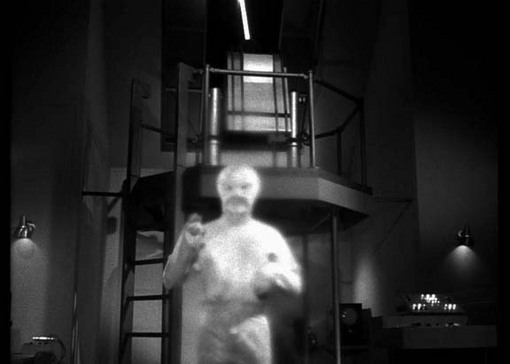
With its “control voice” introduction (“There is nothing wrong with your television set”) and its ABC network-mandated emphasis on “monster of the week” sci-fi thrills, “The Outer Limits” (1963-65) was perhaps the least distinguished series by comparison, but creator Leslie Stevens had similarly upscale ambitions. As Serling did with “The Twilight Zone,” the “control voice” narrator began and ended each episode with a moral lesson or a brief note of cautionary wisdom, and Stevens (along with influential first-season producer/writer Joseph Stefano, the screenwriter of “Psycho“) brought additional prestige to the series by recruiting top-notch talent behind the scenes.
Film School in the Comforts of Home
What I eventually came to realize, in the clarity of hindsight, is that “The Outer Limits” was in some respects one of my first at-home film classes, and my first post-Kubrick recognition of a single artist’s vision. In this case, it was a crash-course in the appreciation of great cinematography. A decade before I began serious film studies in college, I was enthralled by the skill of a then-emerging master: Conrad Hall.

Film appreciation rarely develops in straightforward chronology. When I was devouring every syndicated rerun of “The Outer Limits” in the early ’70s, I hadn’t seen “Butch Cassidy and the Sundance Kid,” and I didn’t know that Hall (by then an in-demand virtuoso of his craft) had already won his first of three Academy Awards for his work on that film. I didn’t know that Hall (along with other trailblazers like Haskell Wexler) had distinguished himself by breaking the established rules of conventional Hollywood cinematography, allowing lens flares and other previously forbidden “sloppy mistakes” to be woven into the aesthetic fabric of his work. [See image from “Cool Hand Luke,” above.] I didn’t know that Hall’s innovative work on “The Outer Limits” had given him the confidence and technical skill that he would bring, a few years later, to “In Cold Blood” and “Cool Hand Luke” (both 1967), two films that made Hall an innovative member of what was fast becoming the “New Hollywood” vanguard.
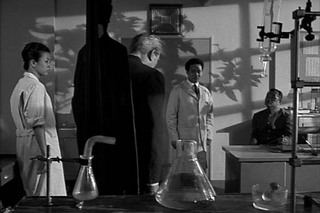
What I did know, as a nascent student of the moving image, was that Hall’s work on “The Outer Limits” was utterly captivating and, for its time, conspicuously unique. As decades passed, I realized that Hall’s black-and-white images, heavily influenced by what I later learned was film noir, had been burned into my brain through repeated viewings, captured and memorized as prime examples of bold, expressive cinematography.

Only later did I learn that my introduction to Hall’s work had actually come several years earlier: Upon graduating from USC film school in 1949, Hall (the son of writer James Norman Hall, author of Mutiny on the Bounty) had formed a small production company with two USC classmates, and quickly established his professionalism by shooting commercials, industrial films, and a number of 16-millimeter, full-color nature films for Disney, including 1953’s “The Living Desert.” By the early 1960s, nearly every school district in the U.S. owned or had access to 16mm prints of Disney’s popular nature films, and “The Living Desert” was an AV-room mainstay at Seaview Elementary, the grade school I attended in my hometown of Edmonds, WA, from 1966 to 1973.
Setting the Stage for Greatness
Rising through the professional ranks, Hall worked as camera operator on Elia Kazan‘s 1955 classic “East of Eden,” for veteran cinematographer Ted McCord, whose stellar credits included “The Treasure of the Sierra Madre” and many other Hollywood classics. Years later, McCord fell ill after shooting six episodes of “Stoney Burke,” a TV Western series starring Jack Lord (later of original “Hawaii Five-O” fame). McCord suggested Hall as his replacement, and the young cameraman received his first official “Director of Photography” credits on “Stoney Burke” episodes including “Image of Glory” and “Point of Entry,” first broadcast in early 1963.

“Stoney Burke” had been created by Leslie Stevens and produced by Stevens’ company, Daystar Productions, which had signed John Nickolaus as D.P. for Stevens’ new series, “The Outer Limits.” When “Stoney Burke” was cancelled, Stevens made a special arrangement to retain Hall’s services: For the first season of “The Outer Limits,” Hall and Nickolaus would share alternating D.P. duties, and Hall shot a total 15 episodes.
(For the record, much of this information comes from David J. Schow’s impeccably researched reference The Outer Limits Companion, one of the finest books ever written about a single TV series. Unlike Mark Scott Zicree’s equally useful and still readily-available Twilight Zone Companion, Schow’s indispensible book, revised and updated in 1998, remains inexplicably out of print.)

As Hall would later recall to Schow, “The Outer Limits” provided a valuable opportunity for the young cinematographer to get all the “gimmicks” out of his system: “I was fairly new at the game, and had a chance to experiment a lot. Anything I’d ever heard about, dreamt about or thought up — I tried everything in the book. ‘The Outer Limits’ became a school for the development of my craft.”
Hall had help from another rising star on the technical side: Just as Ted McCord had taken Hall under his wing, Hall’s camera operator on “The Outer Limits” was William A. Fraker (1923-2010), who quickly joined the ranks of top cinematographers with credits including “Bullitt” and “Rosemary’s Baby” (both 1968). Both Hall and Fraker had their technical educations deeply enhanced by Lloyd Garnell, a veteran gaffer and lighting technician who invented the small, portable spotlight called “the Goldie” (after Garnell’s nickname) that is still in use today.

Even now, almost 50 years later, it’s easy to see that Hall’s work on “The Outer Limits” was extraordinary for its time. Stevens had conceived “The Outer Limits” as the first TV series to heavily incorporate state-of-the-art visual effects, and Hall expertly accommodated the technical requirements of optical trickery while creating striking images that subtly enhanced or intensely amplified the psychology of any given scene. Working on a punishing schedule (and with necessity being the mother of invention), Hall mastered the efficient use of shadow, negative space, oblique angles and noir-influenced lighting effects to maximize the series’ visual impact on a minimal TV budget.Five years before the “scandalous” lens flares of “Cool Hand Luke,” Hall was already indulging his predilection for rule-breaking, despite friction from old-school industry veterans. Here’s another telling quote from Hall in The Outer Limits Companion:
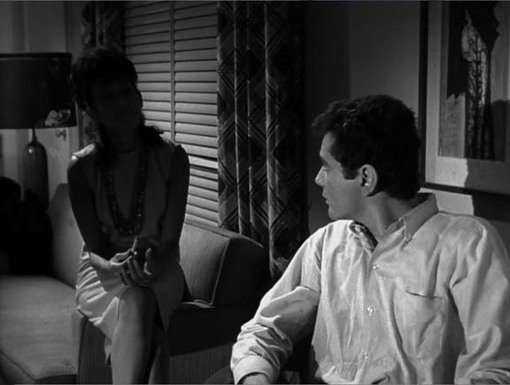
“There were TV technicians telling me things like I had to have a two-to-one lighting ratio [i.e. between actors and settings] or people wouldn’t be visible on TV. Well, people don’t have to be visible all the time. Sometimes their outline is enough. We handled the show as if was not an electronic medium…I made it look as if it was going to be seen on a motion picture screen, and what the ‘experts’ did not understand was that it was better! In every instance where they said ‘It won’t look good on television’ they were wrong, because I’d seen it, and it looked great!”
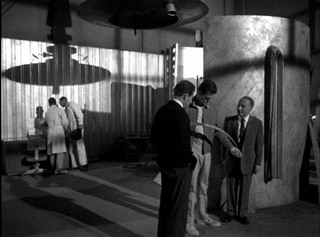
It looked great then, and Hall’s work on “The Outer Limits” stands as an enduring testament to the boldness of a single artist’s vision. Hall may have been guided by a rotating roster of directors (most of whom were delighted by the cameraman’s penchant for quick-thinking innovation on a shoestring), but it’s his work and his vision that gave the first season of “The Outer Limits” such an impressive and lasting visual impact.
“You keep fighting the feeling that you’re in a sausage factory,” said Hall about the rigors of working in episodic television, “but enough people cared to make it worthwhile for me. The producers cared, the directors cared, the people I was photographing cared, and some of the audience cared. There were people who would say ‘Gee, that’s a well-photographed show.'”
Into the Big Leagues
If you subscribe to the notion that all genuine artists are restless souls who must constantly seek new creative challenges, it makes perfect sense that Hall would leave “The Outer Limits” after shooting those 15 first-season episodes. The series’ second season would be creatively compromised by network interference (inevitably resulting in lower overall quality, despite several superior episodes), and with nothing left to prove in that creative arena, Hall must’ve seen the writing on the wall. After shooting “The Unknown,” an hour-long 1964 TV movie directed by frequent “Outer Limits” helmer Gerd Oswald and written by Joseph Stefano, Hall was off to the movies, beginning a 37-year run (including a decade-long career break from 1977 to ’87) as one of the greatest cinematographers in the history of American film.
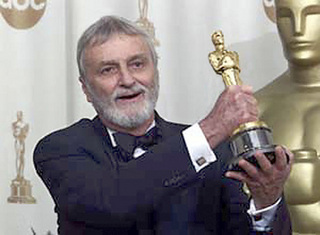
Flash forward to August, 1999: A few weeks before its L.A. and New York premieres, “American Beauty” was already gathering critical and industry buzz as that year’s awards-season front-runner. At the Academy Awards the following March, the film won Oscars for Best Picture, Best Director (first-timer Sam Mendes), Best Original Screenplay (Alan Ball), Best Actor (Kevin Spacey) and best Cinematography for Hall. Mendes generously praised the veteran D.P.’s priceless contribution to the film. Their collaboration had been mutually rewarding, and Hall would win his third Oscar for his breathtaking work on Mendes’ 2002 follow-up, “Road to Perdition.” (Hall still holds the record for longest gap between Oscar wins — 30 years between “Butch Cassidy” and “American Beauty.”)
In early August of ’99, I was enjoying my job as the original DVD editor on Amazon.com’s Video & DVD editorial team, back when the world’s biggest e-tailer still favored editorial content over “bot”-generated product pages. Our team had been treated to a private preview of “American Beauty” (my former colleague Sam Sutherland lavishly praised the film in his still-online Amazon review), and shortly after the screening I got a phone call from a publicist: Would I be interested in an interview with Conrad Hall?
American Idol on the Line
Even when you’re a seasoned journalist (and by that time I’d been interviewing filmmakers for nearly 15 years), opportunities to interview your personal filmmaking idols are relatively rare. What you always hope for (and sometimes those hopes are notoriously dashed) is that your idols will be as admirable in conversation as they’ve been with their careers. I had no reason to think Hall would be a difficult interview: He’d always been generously eloquent with the press and, more importantly, with the countless film students he’d addressed over the decades. I’d also seen the great 1993 documentary “Visions of Light: The Art of Cinematography” (now sadly out of print on DVD), in which Hall’s gracious personality shines through, especially when he modestly recalls the “happy accident” that led to the most striking expressive image in “In Cold Blood.”
<iframe width="500" height="369" src="http://www.youtube.com/embed/mas4zNdBhzo" frameborder="0" allowfullscreen="“>
A few days after the publicist’s call, I was on the phone with my longtime D.P. idol “Connie” (as he introduced himself) Hall. (Unfortunately the resulting interview can’t be found online; aside from in-house and freelance product reviews, Amazon has erased almost all evidence of its late-’90s editorial golden age.) With some fascinating asides, we focused on “American Beauty.”
An easygoing conversationalist, Hall informed me that Tom Cruise had recommended him to Mendes, who deliberately sought “the best D.P. I can get” for “American Beauty.” (Cruise was visiting then-wife Nicole Kidman in London while Mendes was directing her in his controversial 1998 stage production of David Hare’s “The Blue Room.” Mendes had shown Cruise his “American Beauty” screenplay and asked Cruise to recommend cinematographers.)

Although Hall and Mendes had incorporated digital video into “American Beauty” (most of it shot by actor Wes Bentley, in character, with an early Sony DV camera), Hall was still wary of DV in its early stages and offered a prescient assessment of changes to come: “Modern cinema will probably be controlled by somebody other than the cinematographer. The cinematographer will still be very much there, but I see that much of the imagery won’t be created with the camera, necessarily, but with the camera elements that are assembled in a computer. I don’t have the inclination or desire to even think that way. I’m very happy that I came into this work at the mid-century point, halfway into the history of film. Now I’ll keep working but I’m going to stay away from all the special effects stuff. I’m going to get all the little stories like “Searching for Bobby Fischer“ [which Hall had shot for another first-time director, Steven Zaillian] and things like “Run Lola Run” and “The Postman (Il Postino)“. These stories don’t need special effects, and they’re the kind of stories you can have great feelings for. With your simple camera and lens and film and lighting you can create the moods to bring joy to audiences all over the world.”

I’d like to think that Hall would’ve adapted to HD-DV cameras and lighting as their digital capabilities began to match the subtleties of celluloid film and chemical processing. His entire career — and especially his innovative efficiency on “The Outer Limits” — suggests that he would’ve remained open-minded to change on a technical level. With regard to his preference for substantial human drama (those “little stories” he referred to), well…take a look at Hollywood’s ongoing glut of effects-laden blockbusters, and it’s safe to assume that Hall would’ve gravitated to more independent directors and projects, and vice versa.

True to form, Hall was generous when I asked him to name then-up-and-coming cinematographers whose work he admired: He quickly cited Emmanuel Lubezki, Piotr Sobocinski, Roger Deakins and John Toll as personal favorites (among his contemporaries: Vittorio Storaro), and equally praised Ellen Kuras, Lisa Rinzler and Nancy Schreiber as talented female D.P.’s on the rise. When I asked (for the purpose of Amazon product-linking) if there were any books he suggested for aspiring D.P.’s and other filmmakers, he cited Masters of Light: Conversations with Contemporary Cinematographers (Dennis Schaefer and Larry Salvato, University of California Press, 1986). “I’m always being asked to sign it,” he said. “That one’s quite good.”
Not surprisingly, but with complete sincerity, Hall also praised his son, Conrad W. Hall, who had served as second-unit D.P. on “American Beauty”: “He’s going to be a wonderful cinematographer. I’ve seen his work, and it just takes that special script to make it come along.” (Now alternately working as a camera operator and D.P., “Connie Jr.”‘ has a growing list of credits including camera operator on Fincher’s “Se7en” and “Fight Club” and D.P. on “Panic Room.”)
Coda
As often happens when an interview is going well, my phone chat with Conrad Hall exceeded the 20 minutes we’d been allotted by the publicist, yet after an extra 15 minutes I still found myself wishing we could talk for hours. Our conversation remains one of the personal highlights of my career, and I cherished it even more when Hall deservedly won the Oscar for “Road to Perdition.” Sadly, it was a posthumous award: Born in Tahiti in 1926, Conrad L. Hall died on January 4th, 2003 in Santa Monica, CA, due to complication from bladder cancer. Eleven weeks later, on March 23rd, Conrad W. Hall accepted the Oscar on his father’s behalf.
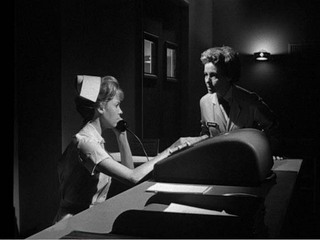
For me, it all goes back to those “Outer Limits” episodes that I’ve never grown tired of watching. Regardless of your age (but especially when you’re young), experiencing and recognizing excellence is one of the most vital ingredients of inspiration. That applies to all ambitions, skills, careers, and means of expression, but within his own creative arena, Conrad Hall (in The Outer Limits Companion) eloquently expressed the essence of a single artist’s vision:
“I knew how to make a camera work like a mechanic knows how to make a motor work. I learned it in two years [at USC]…I could have learned it in six months or less. The rest of it, there’s no way to explain; how the artistry comes out of you is a part of you, part of your experiences in life, the way you see things.”
Guide to black-and-white “Outer Limits” frame captures (top to bottom):

• On “The Outer Limits,” Hall earned the distinction of a single-name screen credit.• The illusion of depth: Hall matches lighting to a forced-perspective painting behind Martin Landau in “The Man Who Was Never Born.”• Simple solutions: Vaseline on the lens to blur the “Bifrost Alien” (John Hoyt) in “The Bellero Shield.”• Shadows, mood and atmosphere: film noir influence in “The Hundred Days of the Dragon.”• Dreamlike exteriors: Using scrims and filters to light Shirley Knight in “The Man Who Was Never Born.”• Full-tilt boogie: Oblique angles in “It Crawled Out of the Woodwork.”• The illusion of size: Long shadows and spatial relations in “The Architects of Fear.”• “People don’t have to be visible. Sometimes their outline is enough”: Breaking the “rules” in “It Crawled Out of the Woodwork.”• The suggestion of evil: Shadow-sculpting the face of Barry Atwater in “Corpus Earthling.”• Hello darkness my old friend: Lighting only what’s necessary in “The Human Factor.”
_ _ _ _ _

A Seattle-based freelancer, Jeff Shannon has been writing about film and filmmakers since 1985, for the Seattle Post-Intelligencer (1985-92) and The Seattle Times (1992-present). He was the assistant editor of Microsoft’s “Cinemania” CD-ROM and website (1992-98), where he worked with rogerebert.com editor Jim Emerson, and was an original member of the DVD & Video editorial staff at Amazon.com (1998-2001). Disabled by a spinal cord injury since 1979 (C-5/6 quadriplegia), he occasionally contributes disability-related articles to New Mobility magazine, and is presently serving his second term on the Washington State Governor’s Committee on Disability Issues and Employment.

